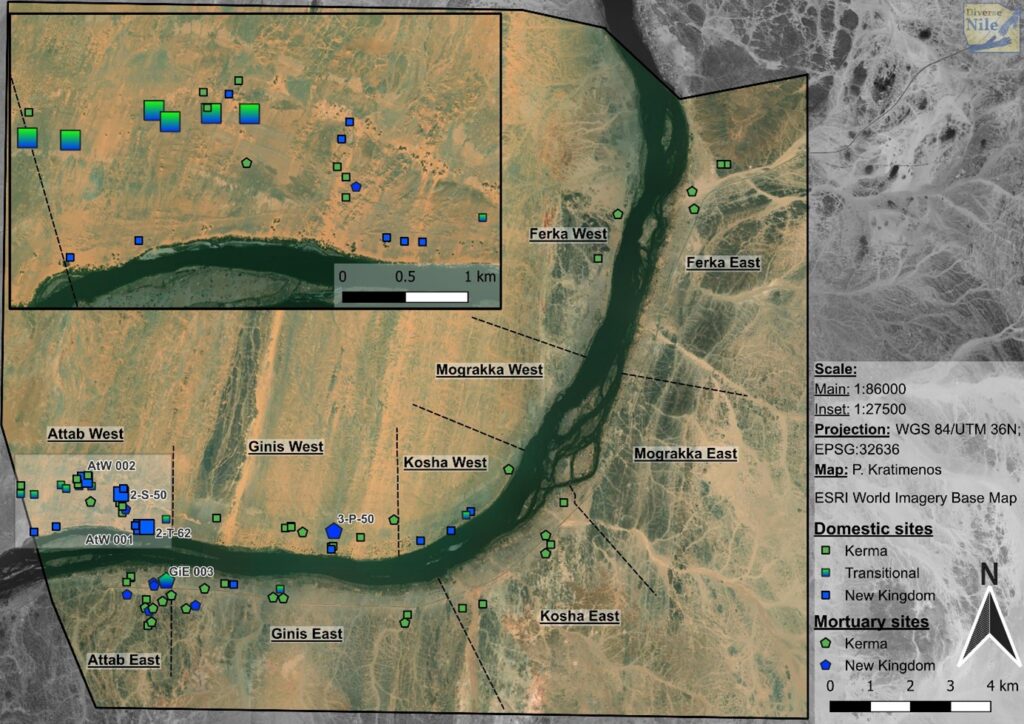I am very happy to announce that a new article by Panos, Hassan, Julia and myself, on integrating evidence from domestic and funerary archaeology has just been published open-access in World Archaeology (https://doi.org/10.1080/00438243.2025.2567057). The article is part of a special issue on Domestic and funerary archaeologies in dialogue edited by Penny Bickle (University of York), Solène Denis (CNRS) and Stella Souvatzi (University of Thessaly), and I am very much looking forward to seeing the other papers in the issue.
In our paper ‘Establishing a dialogue – Settlement and funerary archaeology in northern Sudan’ we explore ways of combining methodological and interpretative frameworks from mortuary and settlement archaeology. We focus in particular on better understanding social dynamics and cultural entanglements in the Attab-Ferka region in the 2nd and 3rd millennium BC and how these can manifest in the archaeological record. The nature of cultural entanglements can vary considerably at different scales and spheres of society as well as being influenced by a range of internal and external causes, such as a changing environmental and socio-political landscape. By using both mortuary and domestic archaeological data as well as interdisciplinary approaches which take into account the local landscape, the project is striving for a more holistic perspective on the Attab-Ferka region at both the local scale and regional level in the longue durée.

In this article we continue to consider the problematic use of labels in archaeological research, for example ‘Egyptian’ versus ‘Nubian’ by suggesting that ‘compound’ (after Stewart 2011) cultures may be a useful way of thinking about the ‘new’ cultures that can be created when different communities interact. This broadly moves away from some of the problematic connotations or idiosyncrasies of existing terminologies such as hybrid or syncretism. Overall, we hope this new article gives a good overview of many of the areas we are exploring as part of the DiverseNile project, and we will be elaborating on many of them in upcoming publications (including cultural entanglement; settlement patterns/urbanism; scales of analysis).
Reference
Stewart, C. 2011. “Creolization, Hybridity, Syncretism, Mixture.” Portuguese Studies 27 (1): 48–55. https://doi.org/10.1353/port.2011.0007
